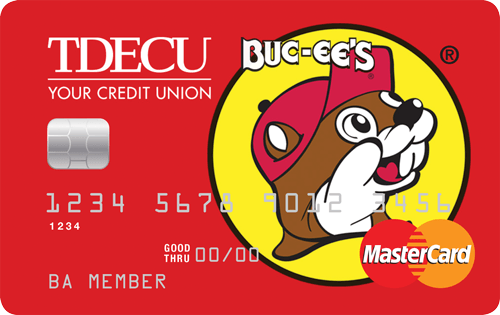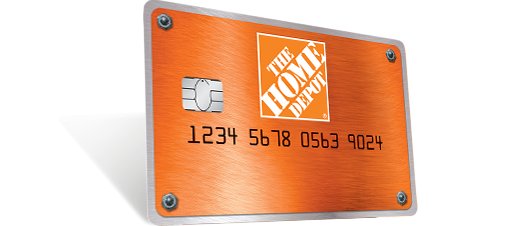It used to be easy to sign up for travel cards. When you hear stories from just a few years ago, they seem unbelievable today. That’s because the banks figured out what we were up to: signing up for a bunch of cards to get the signup bonuses and canceling them before we’d ever had to pay an annual fee. FREE POINTS!
As you could imagine, the banks didn’t like that very much, but it wasn’t until the price of giving away all these reward points was high enough that they did anything about it. Their response was to put in some rules on new card applications. These rules vary for each bank and are continually changing. One of the first of these restrictions people hear about is Chase’s 5/24 rule.
At face value, it seems an easy rule to understand, but I see constant questions online where people get confused about the details. What counts? What doesn’t? Why’d I get denied for a card? I’ll review some of the most misunderstood parts of the 5/24 rule, explain what it means to you, and if you should care.
Background
Chase’s 5/24 rule first surfaced in 2015 when people started getting denied for the Sapphire Preferred and Freedom cards. The reason for the denial was they had too many recent applications. While not written into any card application, we pieced together through crowdsourcing in the points and miles community that the limit was 5 cards in the last 24 months. Thus the ‘5/24’ moniker was claimed.
While the rule was originally only for Chase’s proprietary cards earning Ultimate Rewards, it began to creep throughout their co-brand card portfolio. In November 2018, the last remaining card not subject to the rule, the Hyatt credit card, stopped taking new applications and the 5/24 Rule became the law of the (Chase) land. Except for one small problem. This law isn’t written anywhere.
Sure, there was a short time when a mention of it appeared on a card application, but that was quickly removed. Nowadays you need to know that it exists or run the chance of being tripped up by it when applying for a new card. Why Chase still refuses to put this rule in writing is one of the mysteries of the points and miles universe. Everyone knows it exists, but there’s officially nothing to say that it does. It’s like a black hole. You can’t see it, but be sure that it’s there.
Eight Misunderstandings About 5/24
I’ve only applied for one Chase card. Why was I denied?
Chase doesn’t only count its own cards when adding up how many cards you’ve signed up for in the last 24 months; they count cards from all banks (or at least all the cards that show up on your credit report). And now that credit bureaus update records almost instantly, it’s no longer possible to apply for multiple cards on the same day, hoping to fly under the radar.
What’s the deal with business cards?
Business cards don’t show up on your personal credit report. Therefore they don’t count toward your 5/24 total. This fact, and that business cards open up a new world of signup bonuses, are the most significant advantages to getting business credit cards (as long as you actually have a business. Here’s how to prove you’re a real business.).
I was denied a Chase Business card because I was over 5/24. I thought you said 5/24 doesn’t apply to business cards!
Here are two of the biggest misunderstandings with 5/24.
- Applying for and getting approved for a business card from any bank does not increase your 5/24 count. If you’ve applied for 5 business cards in the past 24 months and no personal cards, your count is currently 0/24. Only personal cards will add to your 5/24 total.
- Chase looks at your personal card 5/24 status even when you apply for a business card. If you’re over 5/24 for personal card applications, you will not be approved for a new Chase business card.
What personal cards count towards 5/24?
Wow, right to the difficult ones. OK, here goes. Any personal card that you can use anywhere counts. Like this one:

Which I’d apply for just because if it didn’t count to 5/24 and if I were eligible for it.
However, this card probably won’t count:

Since this card is only good at Home Depot stores, reports say it will not count toward 5/24. However, if you get the Home Depot Mastercard, it will count.
I’m an authorized user on an account. Does that count to 5/24?
Well, no, but yes. Which is one of the reasons I hate adding authorized users to accounts.
When Chase’s computer algorithm is sorting through applications, one of the things they’re looking at is 5/24 status. When you’re an authorized user on an account, that account shows on your credit report unless you’ve already done the work to remove it.
So the initial computer screen by Chase will deny you if you’re over 5/24, including your authorized user accounts. It is possible to overcome this by calling Chase and speaking to someone. A credit analyst can review your application and consider that on one of the accounts you are only an authorized user and decide if you should get a card. If two accounts are in question, the odds decrease tremendously.
You’re always better off if you can get automatically approved by the computer. The fewer phone calls, the better.
What counts as 24 months? The date I applied for a card? My first bill?
Wow, you’re really anxious to get a new card, aren’t you?
Some reports show that you’re eligible for a card at the beginning of the 24th month, while others show that you must wait until the 1st of the month after 24 months have passed.
If it were me, I’d wait until the following month, but I’m willing to play the long game and not look for the easy scores.
I’ve read a bunch of ways to get around 5/24 online. Do they work?
Probably not.
It’s a popular hobby of bloggers to try and find ways around 5/24. At first, there were a few loopholes, but Chase shut them down. The only way to bypass the rule is if you get a targeted offer on your Chase account online – and even those come with a bunch of caveats.
If it were me, I’d plan on not being able to apply for a Chase card if I was over 5/24.
I’m at 7/24, 9/24, LOL/24. Should I try to get under 5/24?
That depends on your situation. If you’re at 7/24 and 4 of your cards will drop off in a few months, it might make sense to wait. For example, if you can sign up for the Southwest personal and business card while under 5/24, you’ll be in a great position to get a Companion Pass. If that’s valuable to you, it makes sense to wait.
If you’re holding off on applications for another reason, like buying a house, then waiting a few months to get under 5/24 could make perfect sense. The same goes for if there are some Chase business cards you want to pick up. If you can get the Chase Ink Unlimited and the Ink Preferred while under 5/24, that’s a bunch of Ultimate Rewards in signup bonuses and earning potential for a long time.
But if you’re already so far gone over 5/24, waiting doesn’t make sense. You probably know about cards you can get from other banks. Spend your time focusing on them and leave Chase to the rest of us. 🙂
Final Thoughts
On the surface, 5/24 seems like an easy concept to understand. However, many things are confusing or even unknown because Chase refuses to put the policy in writing. These are eight of the major questions I’ve seen, but many more fall along the periphery.
I hope this helps to clear up some of the more common questions about Chase’s 5/24 rule. Feel free to leave any additional questions or tips in the comments section.
Want to comment on this post? Great! Read this first to help ensure it gets approved.
Want to sponsor a post, write something for Your Mileage May Vary, or put ads on our site? Click here for more info.
Like this post? Please share it! We have plenty more just like it and would love it if you decided to hang around and sign up to get emailed notifications of when we post.
Whether you’ve read our articles before or this is the first time you’re stopping by, we’re really glad you’re here and hope you come back to visit again!
This post first appeared on Your Mileage May Vary

7 comments
Some business cards DO count towards 5/24. You can find this info on somw other BoardibgArea.com blogs.
I’ve been back and forth on this topic. For every time I read where someone says they count, someone with a similar situation says it doesn’t.
Good to know. I volunteer you to confirm this by trying it out for us! 🙂
I am in 5/24. With the exception of the 100K SUB for CSP, there hasn’t been any need for me to sign up at Chase. Besides I had a bad experience with opening a Chase Private Client account. They tried to get me to put half of my 401K into an annuity. After that, I was done with Chase. Even though I have banked at Chase for 45 years, I now avoid Chase
Slightly related but what is the “rule” for getting a 2nd chase card of the same name. For instance if I want to get a SWA card and get the bonus, do I have to wait from the time I was approved 24 months ago? 24 months when I cancelled it? 24 months from when I got the bonus? (possibly 2 or 3 months after I was approved)
Thanks
Chase’s current rule for Southwest cards is “This product is available to you if you do not have a current Southwest Rapid Rewards Credit Card and have not received a new Cardmember bonus within the last 24 months. This does not apply to Business Card and Employee Credit Card products.” So if you have a personal card, you can not apply for a different card. In addition, you can not earn a bonus within 24 month of receiving a previous bonus. This means it could be 2-3 months after signing up for a card.
Regarding Business cards, for me they haven’t counted. My credit report does not show then and more importantly, I have not been denied a Business card in the last year and I have been approved for 4 of them.